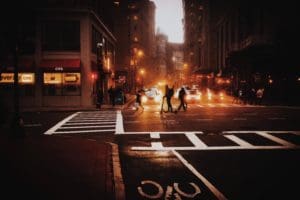

A new study titled, “Identifying alcohol-related and built environment factors that can be modified to prevent pedestrian road traffic deaths,” out of the UW Harborview Injury Prevention & Research Center, Drexel University, American University, and Columbia University looks to understand how built environments may put pedestrians at risk, especially intoxicated pedestrians. Researchers on this study will be using Google Street View and administrative data on alcohol outlets and social services to better understand the pattern of alcohol-related pedestrian injuries and fatalities.
“This study is vital as cities increasingly build nightlife districts and cluster social services,” says Steve Mooney, PhD, HIPRC Research Core associate director. “I’m all in favor of night life and social services being convenient for populations they serve, but places where vulnerable or high risk pedestrian populations cluster should be especially safe.”
Background: About 30% of pedestrians who are killed by cars have blood alcohol levels above the legal limit for driving. The purpose of this study is to further understand geography of these collisions, and to understand if we can modify the built environment to prevent these tragedies.
The full investigator team is:
This project was funded $191,000 by the National Institute on Alcohol, Abuse, and Alcoholism (NIAAA).